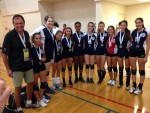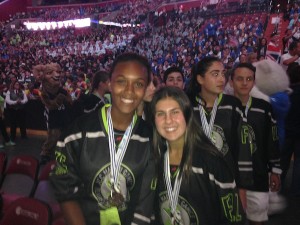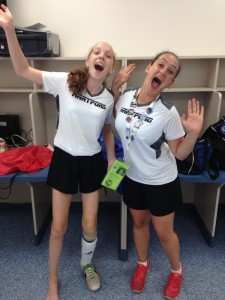Ellen Schwartz (photo from Ellen Schwartz)
Historical fiction is a great way to learn about the past and, while aimed at younger readers, many an adult will enjoy and learn from Ellen Schwartz’s Heart of a Champion (Tundra Books).
For Schwartz, a TV documentary led to her novel about the fictional Sakamoto family, set in the very real time when Japanese Canadians were interned during the Second World War. It was in watching this documentary that Schwartz first found out about the Asahi baseball team.
In the author’s note, she explains that asahi means “morning sun.” The team was established in 1914, winning their first title in 1919, the Vancouver International League championship. They won the Pacific Northwest League championships every year from 1937 through 1941.
After Japan attacked Pearl Harbor on Dec. 7, 1941, and declared war on Canada, the United States and the United Kingdom, writes Schwartz, “In Canada, Japanese Canadians were branded ‘enemy aliens’ and quickly lost their rights. The government, fearing that they would be loyal to Japan and would share war secrets with the enemy, took away their fishing boats, cars, radios and cameras. The Japanese were subject to a dusk-to-dawn curfew.
“In the spring of 1942, the Canadian government began to remove Japanese Canadians from the west coast of British Columbia. Men between the ages of 18 and 45 were sent to road camps in the Interior to build roads. Women, children and older people were sent to internment camps, many in abandoned mining or logging ‘ghost towns.’ Small, primitive shacks were hastily built to house them. The people lost their homes, businesses and possessions, never to get them back.”
In her research for the novel, Schwartz told the Independent, “I learned so much. In addition to the Asahis, I delved into the history of the Japanese-Canadian community in Vancouver and then in the internment camps. I hadn’t realized how established and prosperous the Japanese-Canadian community was in the pre-World War II years. Although there was a lot of discrimination – for example, Japanese Canadians didn’t have the vote, they were paid less than Caucasians for the same work and they often suffered racial slurs – these were middle-class families who were integrated into Canadian society. That’s why it was such a shock when they were uprooted and sent to internment camps in the Interior.
“I had heard about the internment camps but I didn’t realize how awful they were until I went to the Nikkei Internment Memorial Centre in New Denver [on Slocan Lake in the Kootenay region] as part of my research. When I stepped inside the original 1942 shack that is preserved there, I was shocked at how primitive and barren it was. In that moment, the second half of the book came to me, as I experienced what it must have felt like for Kenny and his family.”
 In the novel, 10-year-old Kenny (Kenji in Japanese) aspires to be an Asahi like his older brother, star player Mickey (Mitsuo). However, Kenny has been diagnosed with a heart condition, which means he has to practise secretly, so as to not worry his parents. After the attack on Pearl Harbor, dreams of baseball are replaced with the nightmare of having to register as an enemy alien, of being subjected to a curfew, of having his father’s business closed, of his father being sent to a work camp and of being evacuated to an internment camp, only allowed to bring minimal belongings. In Kenny’s case, he, his mother, older brother and younger sister (Sally) are sent to New Denver, where Kenny and his mother manage to find the strength to inspire others in the camp to hope – and play baseball again.
In the novel, 10-year-old Kenny (Kenji in Japanese) aspires to be an Asahi like his older brother, star player Mickey (Mitsuo). However, Kenny has been diagnosed with a heart condition, which means he has to practise secretly, so as to not worry his parents. After the attack on Pearl Harbor, dreams of baseball are replaced with the nightmare of having to register as an enemy alien, of being subjected to a curfew, of having his father’s business closed, of his father being sent to a work camp and of being evacuated to an internment camp, only allowed to bring minimal belongings. In Kenny’s case, he, his mother, older brother and younger sister (Sally) are sent to New Denver, where Kenny and his mother manage to find the strength to inspire others in the camp to hope – and play baseball again.
The Sakamotos’ neighbors, and dear friends, are the Bernsteins, who have two daughters, Susana and Brigitte (aka Gittie). This allows Schwartz to draw parallels between the treatment of Jews in Europe leading to the Holocaust and Japanese in Canada during the war.
“I wanted to point out that the treatment of Japanese Canadians, although obviously not nearly as lethal or horrific, was comparable to that of Jews in Europe,” explained Schwartz. “In both cases, a minority was being persecuted simply because of their religion or nationality. Giving Kenny a Jewish best friend would make both characters sympathetic about this issue.
“The other reason I made Susana Kenny’s best friend is that, because of his heart defect, he would not have been able to keep up with other boys and might have had a girl as a best friend. Initially, Susana was a minor character, but I really liked her – she had chutzpah – so I gave her a bigger role in the story. It’s her courage and loyalty that give Kenny the impetus to find his own.”
Schwartz herself didn’t have a particularly religious childhood. “My mother was religious; my father wasn’t. We went to High Holiday services and that was about it,” she said. “But we lived with my grandparents when I was little, and my grandfather was observant and I adored him, so I grew up with a real fondness for Jewishness. I loved the family seders with everyone together and my grandfather chanting the Haggadah. I feel Jewish inside even though I’m not observant now.
“When I’m thinking of characters, I don’t set out to make them Jewish, but sometimes they emerge that way. Even if a character isn’t identified as Jewish, I know that that character is, and that gives the character an inner richness for me. For example, my first novel series was about a girl named Starshine Shapiro. I never mentioned that Starshine’s family was Jewish, but in my mind they were, and some of the humor in the books had a definite Jewish flavor.”
Schwartz hasn’t always been a writer.
“After I stopped teaching elementary school in the late ’70s, I started writing educational stories. That was my first foray into writing,” said Schwartz, who grew up in New Jersey and moved to Canada in 1972 with her husband, Bill. “I wrote stories for kids about energy conservation and the environment, which were important to me. I suppose I started with educational writing because I was comfortable ‘talking’ to and teaching kids. I sold the first educational story to the government of B.C. and the second one to the National Film Board. Then I decided to try to write a regular story, and that became my first book, Dusty.”
Schwartz teaches creative writing at Douglas College and she also works as a corporate and technical writer and editor, she said. “My husband and I own a small communications company called Polestar Communications. We do all kinds of writing and editing for public agencies and companies – reports, brochures, articles, educational material, technical material, web writing, etc. We also do marketing and organize events. That’s how I spend most of my writing time.
“I also write magazine articles, mainly for the Costco Connection, the magazine of the Costco corporation,” she added. “The editor usually assigns me stories about books and authors, which, of course, I love. I have interviewed and written about some great authors, including Ann-Marie MacDonald, Richard Wagamese, Linden MacIntyre and Alice Munro.”
On her website, Schwartz notes that she hasn’t even always wanted to be a writer.
“Dancing is my favorite thing,” she said, “and I often tell kids that if God tapped me on the shoulder and said, ‘You can be a professional dancer tomorrow if you give up writing,’ I wouldn’t hesitate for a minute. I take a jazz class once a week and love it.”
While her career path may have changed a few times, Schwartz said the process of getting an idea to publication hasn’t changed much since she published her first book more than 30 years ago.
“Essentially, it’s the same,” she said. “I get an idea, mull it over for awhile, make notes and then plunge in. Many drafts later, I send it to a publisher and hope for the best. Once a manuscript is accepted, I work with an editor (I love working with editors) and do another rewrite. Then the book goes into production, which I have very little to do with other than approving the cover. (I have no artistic talent – my abilities extend to stick figures – and don’t illustrate or do any book design.)
“Of course, now I can submit work electronically, and it’s a lot easier to bounce ideas back and forth with my publishers before I send them the story,” she continued. “And I do a lot of research on the internet rather than in the library, though, for most stories, I still read many print articles and books for background information.”
And she does more than that.
Linda Kawamoto Reid, research archivist at Nikkei National Museum in Burnaby, writes in the foreword of Heart of a Champion that Schwartz “thoroughly researched the times by talking extensively with members of the Japanese-Canadian community. She met Kaye Kaminishi, our last Asahi baseball player, who was a rookie in 1941, and sought out the facts by conducting interviews, reading books and watching films. The story has surprising elements of reality, from the food eaten to the description of events following the bombing of Pearl Harbor.”
Japanese Canadians were not allowed to return to the coast until 1949 and it wasn’t until 1988 that the Government of Canada formally apologized for the treatment of Japanese Canadians during the war. As for the Asahis, the team was inducted into the Canadian Baseball Hall of Fame in 2003 and into the B.C. Sports Hall of Fame in 2005; in 2008, the team was designated an Event of National Historical Significance.
So, is the country in which we’re now living less, more or similarly susceptible to the factors that allowed the refusal of Jewish refugees fleeing the Holocaust and the internment of the Japanese, as but two extreme examples of the racism of those decades?
“Call me a cockeyed optimist, but I think we’re less susceptible to that kind of racism and exclusion in Canada,” said Schwartz. “The recent acceptance of the Syrian refugees is a heartwarming example. When my kids were in school in Burnaby in the ’90s, there were kids of every color and nationality in their classes and no one thought anything of it. We can’t ever take tolerance for granted, but I think that Canada in 2016 is a pretty welcoming place.”
Ellen Schwartz will be at Word Vancouver on Sept. 25, at the Vancouver International Writers’ Festival Oct. 18-23 and at the Calgary Jewish Book Festival Dec. 4-11.

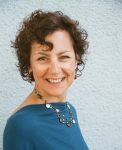
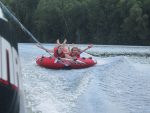
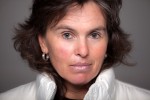
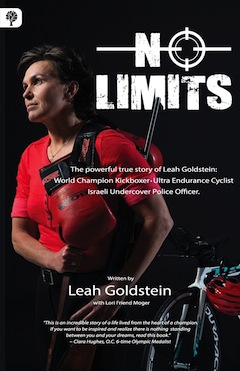 It was in 2007 approximately when she started to consider taking David Spanner’s advice – he wrote a feature on her for the Province newspaper – to write a book for the purpose of inspiring others.
It was in 2007 approximately when she started to consider taking David Spanner’s advice – he wrote a feature on her for the Province newspaper – to write a book for the purpose of inspiring others.